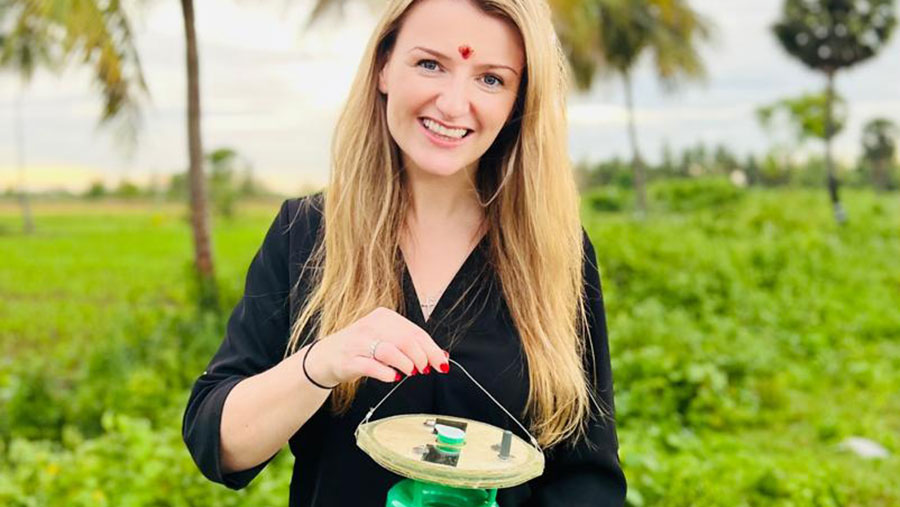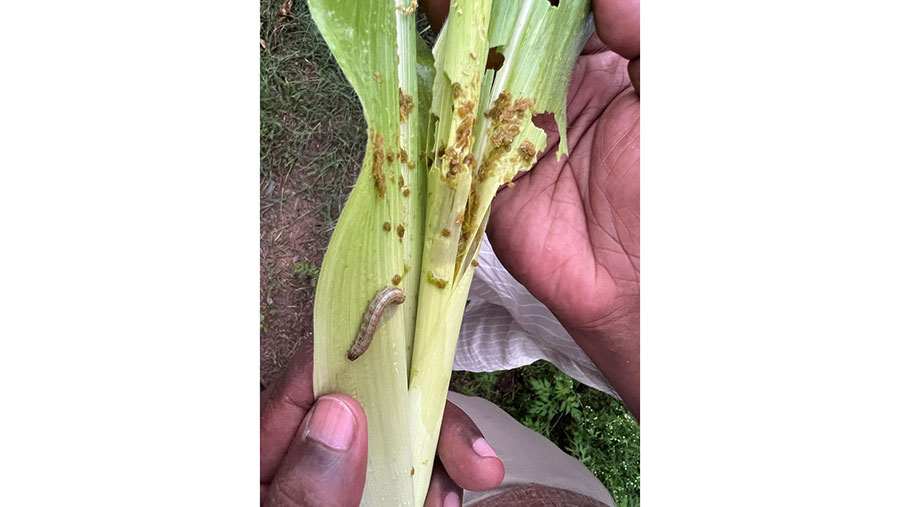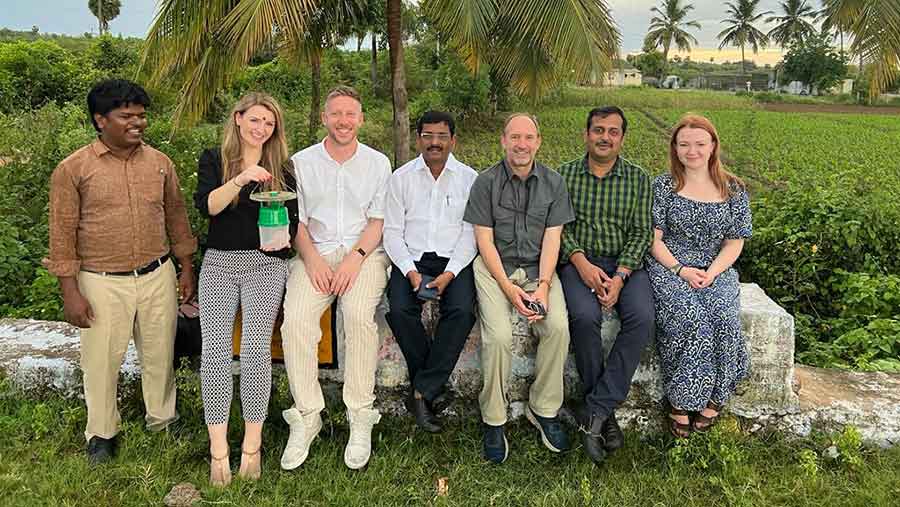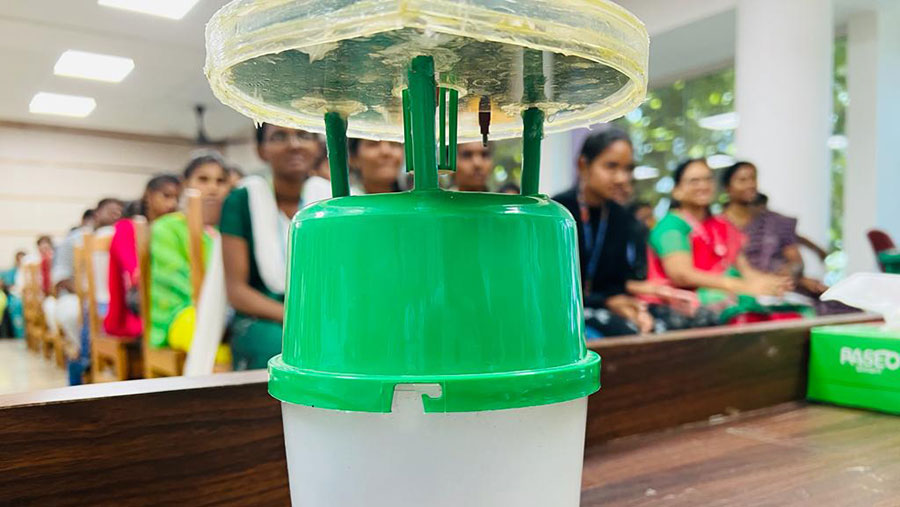Advertiser content
Harnessing sensor-based solutions to combat fall armyworm in India
 Jenna © CHAP
Jenna © CHAP A ground-breaking UK-India collaborative project is leading the way in the global fight against the highly invasive fall armyworm (FAW), Spodoptera frugiperda.
A lepidopteran pest native to North and South America, it feeds in large numbers on leaves and stems, targeting over 350 different plant species, including maize, rice, sugarcane, sorghum, potatoes, and cotton resulting in significant crop losses.
The FAW can progress through its life cycle very rapidly which can result in epidemic levels.
In 2018, FAW was recorded in India for the first time, swiftly infiltrating maize crops across 20 states, threatening livelihoods of smallholder farmers across the country.

© CHAP
The lack of coordinated monitoring systems has hindered epidemic predictions and pesticide resistance has limited the farmers ability to control the pest. This has left farmers struggling to protect their crops.
In response, the UK’s Foreign, Commonwealth & Development Office’s (FCDO) Science and Innovation Network in India provided essential funding for the creation of a coordinated sentinel network to predict pest presence accurately.
The primary goal of the project was the creation of an innovative sensor-based pheromone trap designed to enhance the monitoring of FAW in India.
Over the past two years, Crop Health and Protection (CHAP) has led the two-phased project, working hand in hand with CABI, an international intergovernmental organisation focused on solving agricultural and environmental challenges alongside, food chain data specialists Knowmatics and sensor experts Ystumtec.

© CHAP
Valuable support was also received from consortium members MSSRF, Tamil Nadu Agriculture University (TNAU), and Pushkaram College of Agriculture Sciences.
The early phase of the project in 2021-2022 focused on sensor node development, data infrastructure, field site setup, and workshop dissemination in Tamil Nadu.
The results indicated that the first version of the pest sensor successfully transmitted data from a field in Tamil Nadu, an area susceptible to FAW infestations, directly to a farmer’s mobile phone.
This stage demonstrated that the new remote sensing device had the potential to save farmers time, enhance crop yields, and offer valuable insights into pest presence on their farms.
After this early success, the project was further developed in 2022-2023 with a view to improve the hardware design and measuring the device’s effectiveness. This work was again supported by MSSRF and Pushkaram College of Agriculture Sciences, who created datasets that linked sensor signals and pheromone trap characteristics to the presence of known pest species.
To date, the project has been highly successful with a high level of innovative technology including the development of improved risk models for FAW based on better understanding of the pest’s life cycle and improved monitoring and trapping technologies.
This includes updating trap design with new facilities and protocols, creating a comprehensive online risk model for FAW, designing a farmer-focused web app for initial risk reporting, and establishing FAW breeding facilities.

© CHAP
Valuable insights were gained for device installation and user training, guiding future phases of development and testing. The next phase of the project will be further engagement with key stakeholders and putting the models and app reporting models into practise.
For more information about the pest, visit the fall armyworm research collaboration portal.
To find out more about this project, you can read up on the case study, contact CHAP at enquiries@chap-solutions.co.uk or visit our website.
Provided by
UK Agri-Tech Centre offers a complete life-cycle of support, driving agri-tech innovation and adoption through world-class facilities, expert knowledge and business support, saving you time and accelerating your progress.
